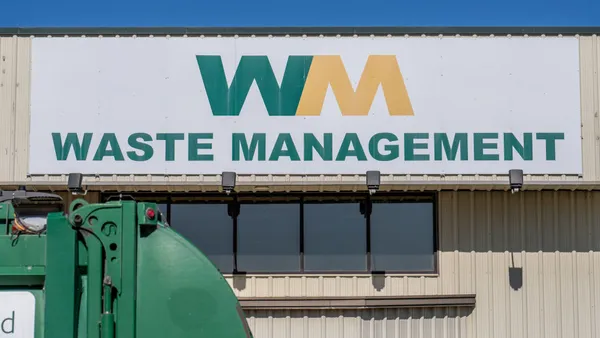Dive Brief:
- Incidence rates of work-related injuries and illnesses appeared to improve for solid waste collection workers in 2020, according to annual data newly released by the U.S. Bureau of Labor Statistics (BLS) on Wednesday. The rate was 5.2 total cases per 100 full-time equivalent (FTE) workers, down from the previous year’s 5.9.
- Even more striking improvement happened at landfills, where the incidence rate fell to 3.4, down from 4.9 in 2019 and the lowest figure since at least 2014. Conversely, after two years on the decline, MRF injuries and illnesses increased in 2020 to an incidence rate of 5.1, up from 3.6 the year before.
- Overall, the focus on infection prevention-related health and safety protocols during the first year of the coronavirus pandemic likely increased attention to everyday safety messages, which may have contributed to the lower incidence rates, industry representatives suggested.
Dive Insight:
Worker safety has been an ongoing issue for the waste and recycling industry, but the pandemic prompted a new category of serious concerns for essential frontline workers — from initial worries about potential transmission from handling the public's waste to risks associated with being in close proximity to other workers in the cab of a truck. But in certain ways, that environment may have contributed to worker safety gains in other areas.
"COVID had everybody paying attention to the safety messages. So the other safety messages were getting through more. And I think that's what's showing out in the data," said Kirk Sander, vice president of safety and standards at the National Waste & Recycling Association.
Solid Waste Association of North America CEO David Biderman noted that "when frontline workers are concerned about COVID, they're going to be more receptive to messages about wearing [high visibility gear], or not being on the cell phone, and other things like that."
Across private employers in all industries, nonfatal workplace injuries and illnesses decreased 5.7% from 2019 to 2.7 million total cases. That equates to a rate of 2.7 cases per 100 FTE workers. The rate in the overall waste management and remediation services category fell to 3.5 in 2020 after three years of stagnating at 4.2. According to BLS, the dataset also includes "cases of COVID-19 when a worker was infected as a result of performing their work-related duties."
BLS reported that the overall decline in injury and illness cases was the result of a decrease in nonfatal injuries, which dropped from 2.7 million in 2019 to 2.1 million in 2020. Meanwhile, BLS said illness cases more than quadrupled. Amid the spread of COVID-19, cases of respiratory illness increased from 1.1 per 10,000 FTE to a rate of 44.
New since 2020 is industry workers' access to COVID-19 vaccinations. And according to a highly anticipated OSHA rule released Thursday morning, employers with at least 100 employees must have workers be vaccinated or provide weekly negative tests beginning Jan. 4, 2022.
Additionally, during parts of the pandemic there were fewer vehicles on the road. It remains to be seen in 2021 how exactly the changing levels of traffic affected collection truck drivers' safety records.
Biderman said that based on SWANA's own internal tracking, these industry safety improvements seem to be continuing into 2021.

The level of injury and illness has swung back and forth more in the MRFs category over the years than in other waste-related categories. Safety at MRFs will require continued attention going forward, Sander said. Ongoing safety challenges include high turnover and communicating with workers for whom English is not their first language.
Sander added that "there's also some thought that maybe as the rising commodity prices went up, more people tried to get into the recycling game," which mean more facilities coming online, with potentially less emphasis on training because of urgency to tap into high prices.
Biderman noted that future years of MRF data may reflect an increasing shift to automation. "We would expect that the increased use of robots in recycling facilities would drive down the injury rates for recycling workers. And we will be reaching out to our members and others in the industry for more data on that in the coming months," he said.
BLS will release 2020 statistics on workplace-related fatalities in December. In 2019, collection worker fatalities decreased year over year, making it the sixth-deadliest occupation in the United States.











